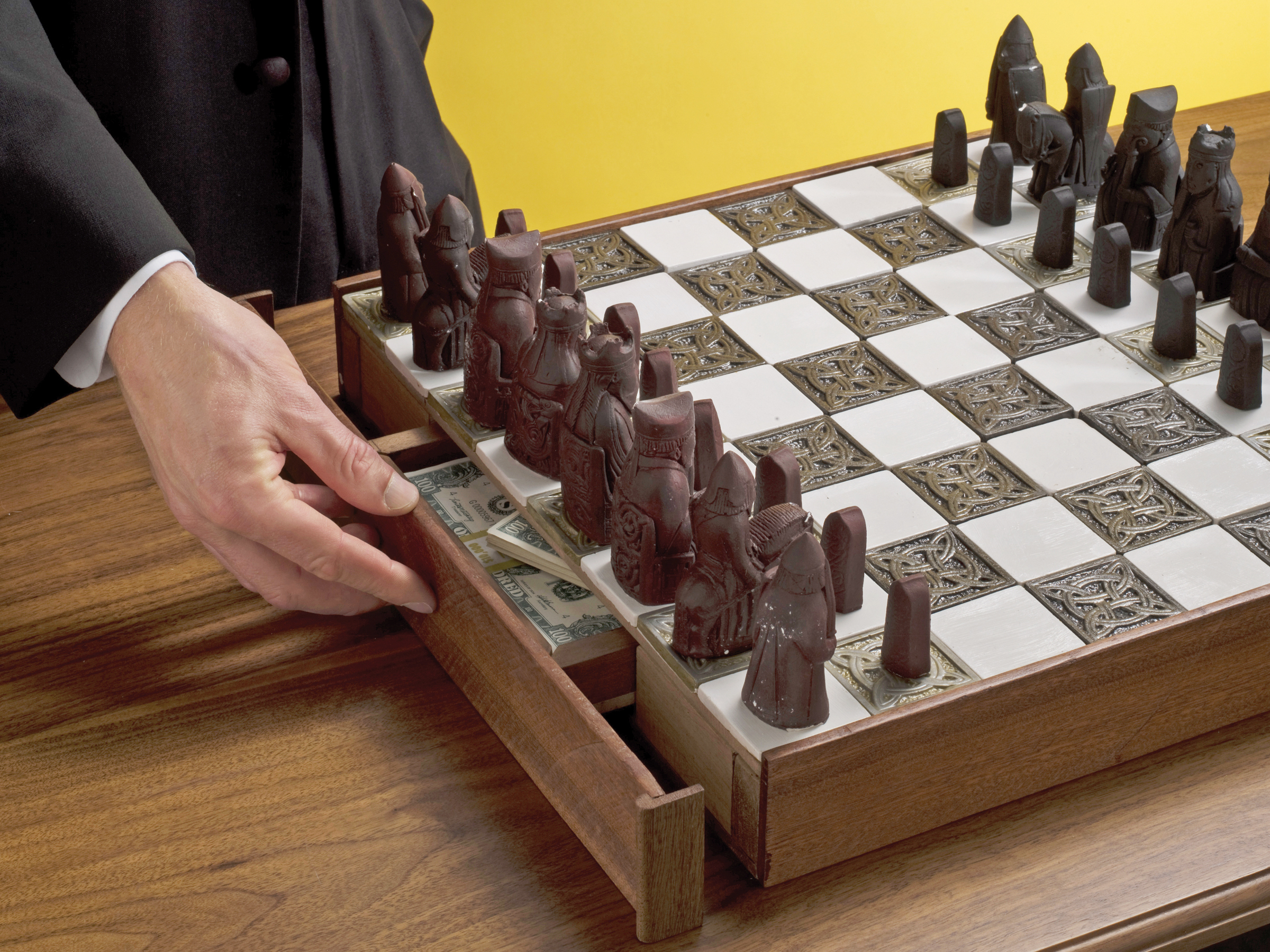Everyone needs somewhere to stash stuff, and this chessboard provides a cunning hiding place whether you’re a super-spy or a super-villain. Moving the chess pieces across the board in a particular way will unlock a secret compartment that you can use to hide diamonds, baseball cards, or the evidence linking you to the crime of the century.
Projects from Make: Magazine
Secret Chessboard Compartment
Unlock a secret compartment with magnetic chess pieces.


